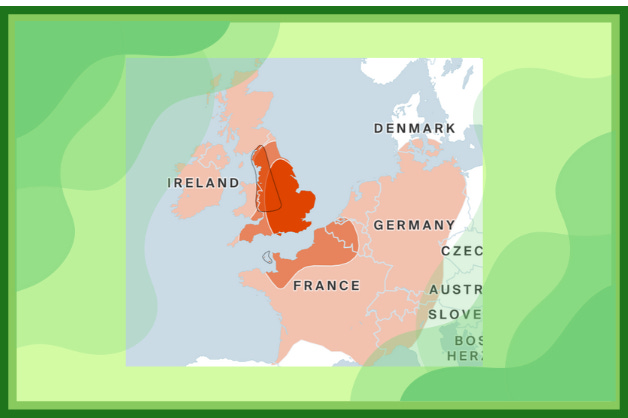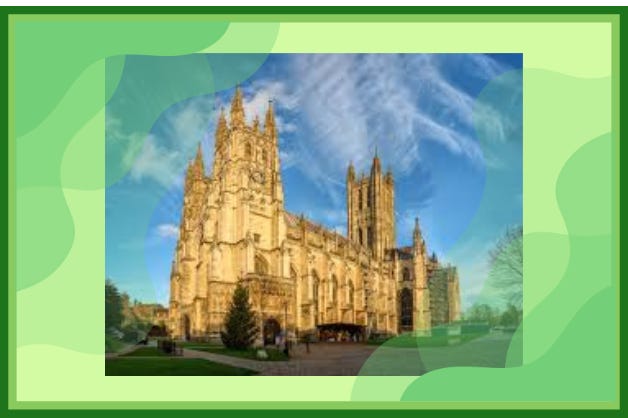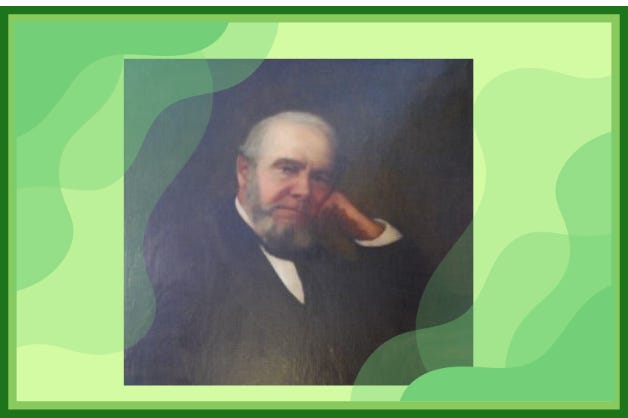Bonjour,
Today’s post strays slightly from my usual musings on French life, but as a genealogy enthusiast, I felt compelled to share this story.
A while ago, I joined the millions who’ve spat in a tube, mailed it off, and waited impatiently to discover what my DNA might reveal about my ancestry.
The majority of the results were as expected - mainly Scottish and Irish. My Dad is Scottish and all of my family still live there and have for as long as anyone can remember.
And most of my Great-Great-Grandparents were Irish - we descend from the Republic and Northern Ireland. In fact, I resemble the Northern Irish part of the family - I was shocked to see a photo of my Great-Great-Grandmother and see the resemblance; it's uncanny.
I love how our features are passed down from generation to generation — it feels as though a part of our ancestors’ live on through us. There’s also a hint of unexpected Scandinavian DNA in my results, and I’d love to uncover the story behind that!
However, there was a part of the puzzle that I couldn't understand - a large chunk of my DNA was linked to London and Northwestern Europe.
It came as a surprise, since I’d always assumed my roots were firmly planted in the Emerald Isle and the British Isles. Then again, you never quite know what these tests will reveal — and I secretly hoped for an unexpected twist in my family tree.
It was exciting to unravel what it meant — if you've ever used a site like Ancestry, you'll understand the thrill of a ‘hint’ that pops up on your screen and leads you to discover a brand-new branch of your family tree.
It was during this process that I unearthed, quite unexpectedly, a connection to the French Huguenots. The Huguenots were French Protestants who faced severe persecution in France in the 1600s, leading many to flee the country or convert to Catholicism.
I discovered that I am related to Jean De La Marliere who is my 13th Great-Grandfather. He was born in 1545 in Northern France and died in Canterbury, England in 1605. Many of the Huguenots ended up in Canterbury, as this was somewhere that they could practice their faith.
As Huguenot numbers grew, they were invited by Queen Elizabeth I to use the Western Crypt of Canterbury Cathedral, which is a wonderful location, as it’s such a beautiful cathedral with a rich history. The Hungenots' numbers eventually dwindled as most of them moved to London to work in the weaving trade, of which many were specialists.
I was excited to see a ‘De La’ name in my tree, as this means it’s a noble name, and so far, it’s the only aristocratic name I've come across on this particular side of the family.
Further down the De La Marliere line came the Duthoits, which was the family name until the late 1800s, when unfortunately it died out among my direct descendants. My 8th Great-Great-Grandfather was Peter Duthoit, who lived between 1693-1764.
He had a son, also called Peter Duthoit, who lived between 1719-1777. They were both well-known Huguenot silk weavers, and there is quite a bit of information out there about them, which I have relished reading.
The Duthoit family were originally silk weavers from near Lille, who settled in Canterbury and later London’s Spitalfields in the 16th century. Peter Duthoit's weaving business was at 3 Wilkes Street, which is right next to Spitalfields Market in London.
This is an area of London I am familiar with, having lived there for many years. I even found out that a relative was buried in a church in East London near my old flat.
Peter Duthoit senior followed the family trade and joined the City Livery Weaver’s Company. They were known for their shot silk material, which was popular at the time.
He married Jane Messman, whose family introduced a rare black silk fabric called ‘alamode’ to England. Their descendants continued weaving silk in London and Canterbury well into the 19th century.
The Huguenots were the first refugees into London in the 17th century. And like many refugees, they made their way to Brick Lane, East London. Even today, this is the starting point for many immigrants who end up in London; it has seen numerous waves of immigration over the years.
Originally settled by the Huguenots, it later welcomed waves of Irish immigrants fleeing the famine, followed by Jewish refugees in the late 19th and early 20th centuries. And most recently, Bangladeshi immigrants.
I've always loved a story, especially a full circle one like this. Without knowing it, I made my home in the footsteps of my ancestors. For me, London felt like home from day one, so it was warming to read about my ancestors. It must have been terrifying to escape persecution in France, but it sounds like they managed to build decent lives for themselves in London.
At the moment, I'm preparing for my French citizenship, and discovering this information about my French ancestry felt serendipitous.
Thank you for reading to the end of my post. It would be lovely if you could press the heart 💛 as it helps me to reach more readers.
Merci beaucoup!
Jenny
Sources:
https://www.huguenotsofspitalfields.org Accessed June 2025.
https://thedreamstress.com/ Accessed 2025.
Ancestry.co.uk Accessed 2025.
https://huguenotmuseum.org Accessed June 2025.













An exciting story!! I might try the ancestry site as well, although there is some concern here (like always in Grmany!) about data safety...
Many of the British naval officer names on the map around Seattle in US where I live have Huguenot French origins, including Puget Sound, Vashon Island and our big stratovolcano, Mt Rainier.